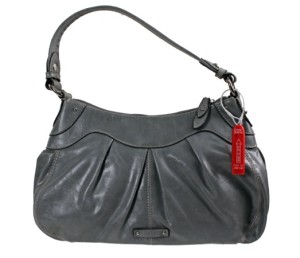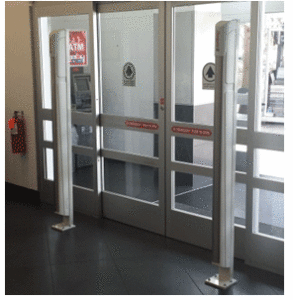 I wonder if Santa Clause conducts background checks on his newly hired elves? I’ve been contemplating the chaos that would take place in Santa’s workshop if he just hired any old elf to work for him. Does Santa ever get into a time crunch right around June and bring in seasonal hires to help meet timelines to get all of the toys made? Imagine the pilferage that would ensue if Santa’s Helpers haven’t been properly screened for criminal activity before being brought on board. Defective dolls might be delivered to darling little girls who deserve better. No firetrucks for a little fella because a fiendish elf stole it. I have no idea what might happen at the North Pole but what I do know is that retailers DO get in a crunch for adding seasonal staff and that CAN lead to criminal activity and chaos.
I wonder if Santa Clause conducts background checks on his newly hired elves? I’ve been contemplating the chaos that would take place in Santa’s workshop if he just hired any old elf to work for him. Does Santa ever get into a time crunch right around June and bring in seasonal hires to help meet timelines to get all of the toys made? Imagine the pilferage that would ensue if Santa’s Helpers haven’t been properly screened for criminal activity before being brought on board. Defective dolls might be delivered to darling little girls who deserve better. No firetrucks for a little fella because a fiendish elf stole it. I have no idea what might happen at the North Pole but what I do know is that retailers DO get in a crunch for adding seasonal staff and that CAN lead to criminal activity and chaos.
There are times when employers hire staff for their busiest times of the year but they rush into it as if they had no idea it was coming. Poor strategic planning can lead to a hurry up and hire mentality. This leads to a myriad of issues:
- Managers are no longer as selective as they would be if they were hiring at any other time of the year. Interviews are shortened and unless something glaring stands out on an application it is submitted to Human Resources with a request to hire.
- The focus is on getting a candidate into “the system”. They can be included in orientation and trained in time to fill the holes in the schedule. This is prime time when other concerns fall by the wayside.
- People are hired who may not truly have the competency to do the job they are hired for. Forget potential theft issues, these workers through no fault of their own may just not be good at their job. A new cashier may not know how to count back change. They may not understand when a short-change artist is trying to con them. They may not get enough training to understand the importance of looking at everything that comes through the lane. Each of these issues causes significant cash and or merchandise shortage to the store.
- Pre-employment screening may not be done. Background information that might have uncovered a checkered past is never discovered because there wasn’t enough time to conduct a check and get the training started. Was a convicted felon just hired? Perhaps it was just a simple petty larceny charge on their record. It could be a conviction for assault was not reported on the application and the employer won’t know because there was no pre-employment screening.
- Hiring on the fly may result in bringing in someone who has been fired for poor performance or insubordination and that attitude may carry into the new workplace.
The list can go on but the bottom line is that not making staffing plans for the busy season can impact more than you might think.
What is the solution? You have to get the store staffed and you will be competing against every other retailer for limited resources. Plan a stepped process for adding new team members to your store.
- First, make a commitment that EVERY new hire will undergo a pre-employment screening NO EXCEPTIONS! Loss Prevention Systems Inc. can conduct thorough background checks that will minimize your chances of bringing in a poor candidate.
- Determine how many new employees you need and add at least 5 to 10 to that number to account for attrition.
- Establish where you will post your job ads and what date you will begin interviews. Build a realistic timetable that includes the length of interviews, length of time for conducting the background check and length of time to complete hiring paperwork and orientations and training.
- Set a Firm “Do Not Hire After This Date” date. Make it firm and don’t allow other managers to make exceptions.
- Allow at least one full week from the time the last person is expected to be hired and processed to get properly trained. Failing to do so sets the new employee up for failure.
Start early enough to make your plan achievable. Starting too early and making a hiring offer then making people wait to start working will cause those new workers to quit. They are working for a paycheck. Starting too late and you will struggle to find people let alone people you want to have working for you.
Santa may not have staffing issues, his team works all year long. You have real personnel concerns and have to hire more for the holidays. Plan ahead and make sure you are taking advantage of available workers don’t allow workers to take advantage of you.
 When we think of gift boxes and wraps during this time of the year we would probably think of robe boxes, shirt boxes or jewelry boxes. Wraps would bring to mind those colorful papers and foils that we use to hide the boxes and try to camouflage the gifts inside. Then there are the ribbons that tie everything together and make the packages beautiful. The whole purpose is to protect the items we have purchased from prying eyes and snoops.
When we think of gift boxes and wraps during this time of the year we would probably think of robe boxes, shirt boxes or jewelry boxes. Wraps would bring to mind those colorful papers and foils that we use to hide the boxes and try to camouflage the gifts inside. Then there are the ribbons that tie everything together and make the packages beautiful. The whole purpose is to protect the items we have purchased from prying eyes and snoops. According to the Small Business Administration (SBA), there are more than 28 million small businesses in the United States and they account for more than 99% of businesses in the country. Small businesses employ close to 57 million people in the United States alone and are a driving force in the progress of the US economy. The good news for an entrepreneur that wants to start a business is that they are not alone, but if you are a small business in the retail industry, the problems you will encounter do not come as paperwork filings or taxes paid. Shoplifting and employee theft are two of the major causes small retail shops face financial distress during their business enterprise. It is an unfortunate problem, but the problem is there and the small business owner has to find solutions to the specific problems in their store.
According to the Small Business Administration (SBA), there are more than 28 million small businesses in the United States and they account for more than 99% of businesses in the country. Small businesses employ close to 57 million people in the United States alone and are a driving force in the progress of the US economy. The good news for an entrepreneur that wants to start a business is that they are not alone, but if you are a small business in the retail industry, the problems you will encounter do not come as paperwork filings or taxes paid. Shoplifting and employee theft are two of the major causes small retail shops face financial distress during their business enterprise. It is an unfortunate problem, but the problem is there and the small business owner has to find solutions to the specific problems in their store. How often does it happen? You are in front of your television watching your favorite college football team playing a game and your spouse starts talking to you about their day or what you need from the grocery store. Then suddenly the conversation takes a nasty turn and you are asked for input about the conversation you weren’t really engaged in. The textbook reply, “Yes Dear” or
How often does it happen? You are in front of your television watching your favorite college football team playing a game and your spouse starts talking to you about their day or what you need from the grocery store. Then suddenly the conversation takes a nasty turn and you are asked for input about the conversation you weren’t really engaged in. The textbook reply, “Yes Dear” or Growing up did you ever do something dumb and your mom or your dad would ask you, “What were you thinking?” Having lived in south for the past 32 years I have learned of the local colloquialism when someone does something stupid, “Didn’t your momma teach you better?” Unfortunately, as a young boy I did a lot of dumb things making me wonder if my brain developed a lot later in life than most people. For example, I had a propensity for walking behind batters warming up to go to the plate for my father’s teen baseball teams. I ended up with more than one fat lip from my stupidity…obviously not learning the lesson the first time. I had a fascination with electrical outlets and wires and old rotary dial telephones…I won’t go into details but no they didn’t work when the wires were pushed into the outlet, I was not injured but I had one very busy guardian angel.
Growing up did you ever do something dumb and your mom or your dad would ask you, “What were you thinking?” Having lived in south for the past 32 years I have learned of the local colloquialism when someone does something stupid, “Didn’t your momma teach you better?” Unfortunately, as a young boy I did a lot of dumb things making me wonder if my brain developed a lot later in life than most people. For example, I had a propensity for walking behind batters warming up to go to the plate for my father’s teen baseball teams. I ended up with more than one fat lip from my stupidity…obviously not learning the lesson the first time. I had a fascination with electrical outlets and wires and old rotary dial telephones…I won’t go into details but no they didn’t work when the wires were pushed into the outlet, I was not injured but I had one very busy guardian angel. Loss Prevention Officers and Managers catch shoplifters and dishonest employees. That is a common perception and in some stores it may be a true picture of what Loss Prevention departments do, with the additional caveat that they may have uniformed people who conduct receipt checks. If this is all that the department does it can be hard to sell store managers on the value of having them on staff if the budget for them comes directly from the store. It is even more difficult for small, independent retailers to justify hiring a Loss Prevention Officer although if the store is in a high crime area they may contract a security guard. There was a time when there was an “us versus them” mindset between store managers and Loss Prevention teams. Over time some larger companies have focused their Loss Prevention teams more on operational issues. For example, I worked for a company that had Loss Prevention conduct food product out of date audits. Their position was that this was a safety issue so it fell to the Loss Prevention team. I had no problem doing the audits, but as I looked at the amount of out of date items I was finding I had to question what the freight team was doing when they were stocking. Who was auditing their work because there were a lot of FIFO (First In First Out) issues I was identifying that were causing out of date problems.
Loss Prevention Officers and Managers catch shoplifters and dishonest employees. That is a common perception and in some stores it may be a true picture of what Loss Prevention departments do, with the additional caveat that they may have uniformed people who conduct receipt checks. If this is all that the department does it can be hard to sell store managers on the value of having them on staff if the budget for them comes directly from the store. It is even more difficult for small, independent retailers to justify hiring a Loss Prevention Officer although if the store is in a high crime area they may contract a security guard. There was a time when there was an “us versus them” mindset between store managers and Loss Prevention teams. Over time some larger companies have focused their Loss Prevention teams more on operational issues. For example, I worked for a company that had Loss Prevention conduct food product out of date audits. Their position was that this was a safety issue so it fell to the Loss Prevention team. I had no problem doing the audits, but as I looked at the amount of out of date items I was finding I had to question what the freight team was doing when they were stocking. Who was auditing their work because there were a lot of FIFO (First In First Out) issues I was identifying that were causing out of date problems.
 mbat and punish shoplifting and employee theft.
mbat and punish shoplifting and employee theft.
